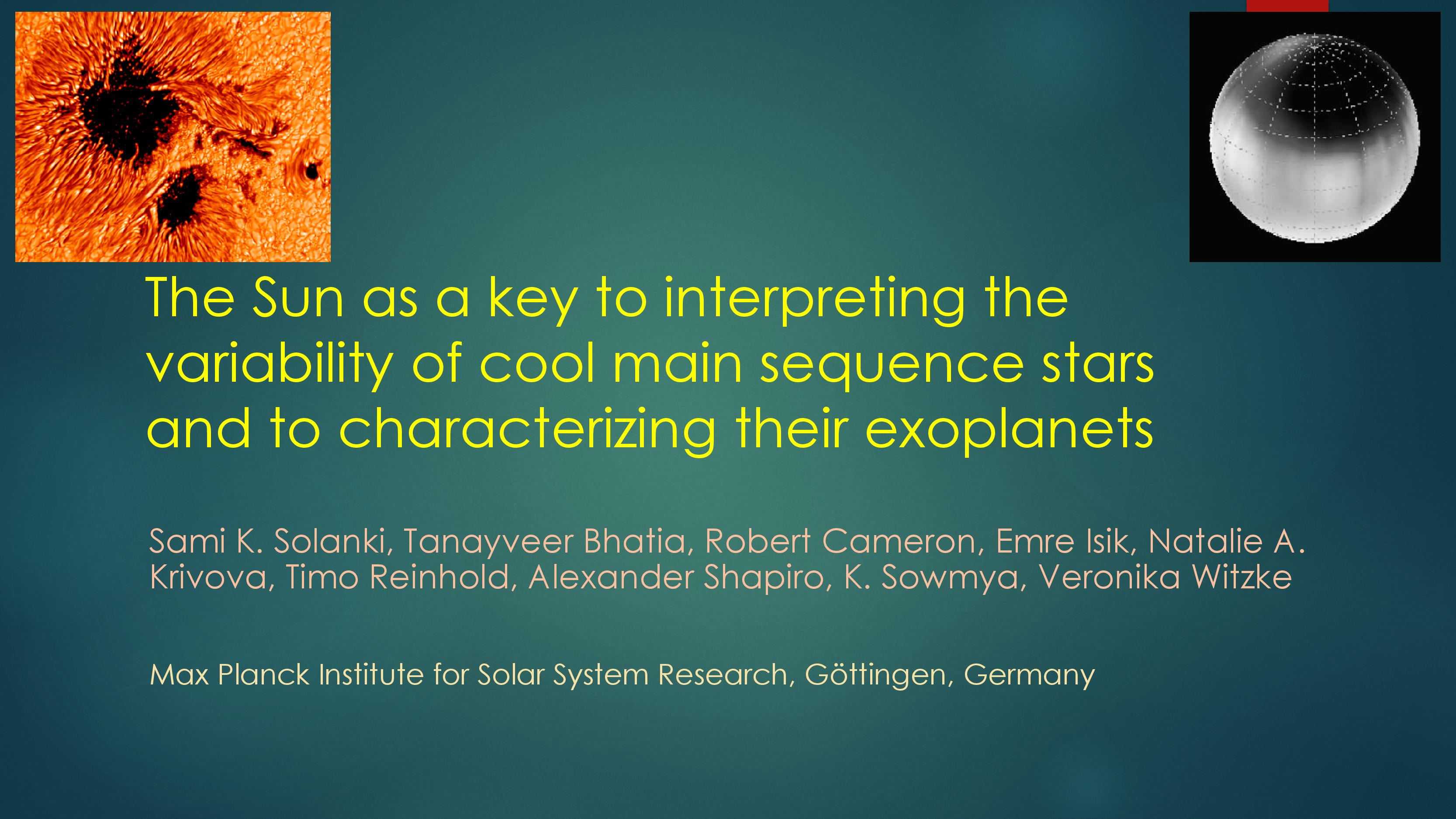The Sun as a key to interpreting the variability of cool main sequence stars and to characterizing their exoplanets
Affiliation
Max-Planck-Institute for Solar System Research
Main category
Natural Sciences (Astrophysics and Astrononmy)
Abstract
The Sun is a typical main sequence star with an outer convection zone, where a dynamo gives rise to magnetic fields that in turn produce magnetic features such as sunspots and faculae at the solar surface. During their presence at the solar surface the spots lead to a darkening, while the faculae produce a brightening. The evolution of the field and the rotation of the Sun results in variations in the Sun’s radiative output, which have been measured for over 4 decades. Such variations have now also been observed in myriads of cool main sequence stars thanks to the high accuracy of space missions such as Kepler, TESS and CHEOPS and in future PLATO.
To properly understand and interpret these variations, models, simulations and techniques developed for this purpose for the Sun and solar variability turn out to be extremely useful. Particularly powerful has been a combination of models that
- describe the rise of magnetic flux tubes through the convection zone,
- determine their distrib
Do you have problems viewing the pdf-file? Download presentation
here
If the presentation contains inappropriate content, please
report the presentation. You will be redirected to the landing page.
